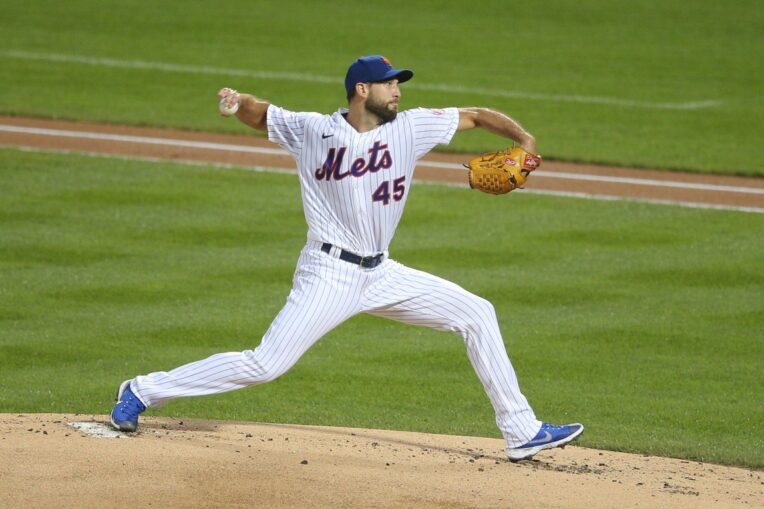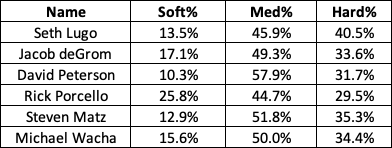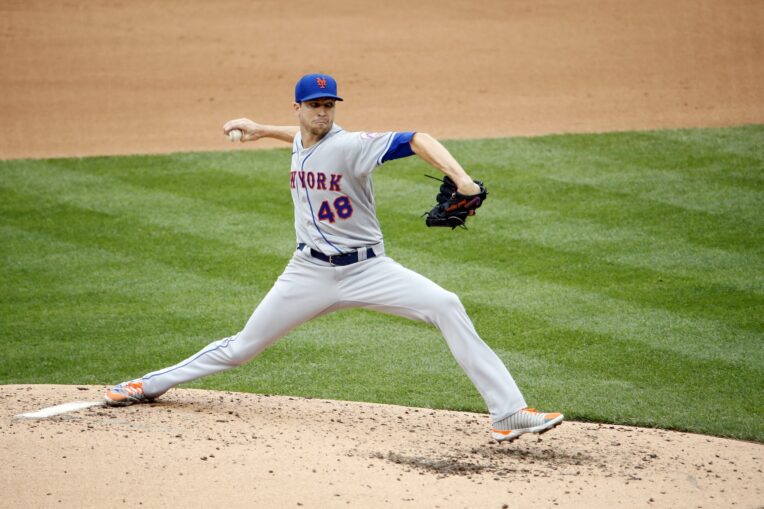
Don’t get me wrong — there were a number of factors behind the New York Mets finishing 26-34 and tied with the Washington Nationals for last in the National League East standings. At different times throughout 2020, it was either the offense, defense, bullpen, or rotation that failed to help this club fire on all cylinders.
Outside of the defense, a glaring hole in New York’s roster was the rotation, which is weird to say since we’ve gotten used to it being an obvious strength in recent years. Although the unit’s cumulative 4.6 fWAR still finished in the top half of baseball, the 5.37 ERA tells a much different — and more accurate — story. That number settled in as the fifth-worst mark in the league.
It’s not surprising that Jacob deGrom‘s 2.6 fWAR made up a large chunk of the rotation’s overall production, especially since that’s something he’s done in each of the last three years. The problem in 2020 was virtually everyone who started behind him. Among Mets hurlers who threw at least 20 innings as a starter, only David Peterson posted an ERA below 5.50 (it was 3.74).
During the 2018 and 2019 campaigns, there was one constant from the Mets’ rotation as they performed among the best in baseball. That constant was far from their grasp in 2020.
No Longer Dominating the Quality-of-Contact Leaderboards
When looking at how New York’s starting staff performed in the categories of soft-hit rate and hard-hit rate allowed when Mickey Callaway was manager, they consistently were the best…or damn close. In 2018, the Mets finished with the best percentages in both categories. They repeated with the lowest hard-hit rate allowed in 2019, and while they posted the third-best soft-hit rate allowed during that time, it was just 0.1% away from putting them in a three-way tie at the top.
Here’s how the quality-of-contact has slowly shifted over this three-year span:

This obviously doesn’t seem like a huge shift from a year-over-year basis, but it becomes more significant of a jump when we simply look at 2018 and 2020 side-by-side. And yes, I know we’re talking about two very different sample sizes, and although that’d make a difference to some degree, I’m not sure how much it would. I mean, it’s not like the overall rotation performance would’ve made a huge positive leap had the season been longer. That didn’t look to be in the cards, at least.
After finishing at the top of the soft-hit rate and hard-hit rate leaderboards for two consecutive years, the Mets finished in unfamiliar spots this year: 12th and 19th, respectively.
Usual Culprits Were Missing
During the 2018-19 run of overall excellence from this part of the roster, there were three dudes who brought the goods and made the rotation production rather top-heavy. The most obvious one is deGrom, but he was joined by Noah Syndergaard and Zack Wheeler on both occasions.
Among hurlers with 150-plus innings in 2018, these three finished within the top six for soft-hit rate allowed and the top five for hard-hit rate allowed. Among qualified hurlers in 2019, they finished within the top 15 for soft-hit rate allowed and the top seven for hard-hit rate allowed.
This year? The Mets only had one starter with at least 20 innings of work finish within the top 30 for soft-hit rate (Rick Porcello), and nobody landed in the top 30 for hard-hit rate. Nope, not even deGrom landed there, but Wheeler still did for each. Porcello actually led the squad in soft-hit rate and hard-hit rate allowed, if you’ll believe that. Here’s what the overall picture looked like for Mets starters:

Things may have normalized a bit with more time (similar to what they accomplished in 2019 after a collectively slow start). Still, this ain’t too pretty — especially after how they produced the two years prior.
Investing in Top-Tier Talent Matters
The old adage is teams can never have too much pitching, and the Mets certainly came up short in this regard.
When general manager Brodie Van Wagenen signed both Porcello and Michael Wacha to one-year deals last winter, it did seem as if New York had a crowded rotation. Definitely not the deepest one in baseball, but there was the potential for healthy competition and someone landing in the bullpen who ultimately didn’t want to be there.
But let’s state the simple and obvious: how much different could this year have been if the Mets just ponied up the money necessary to sign Wheeler? One pitcher wouldn’t have fixed all of their issues — that’s also obvious. However, it would’ve been awesome to watch manager Luis Rojas have the opportunity to put deGrom and Wheeler back-to-back in the rotation, giving the Mets a chance to actually get on some sort of roll. Doing this would’ve especially loomed larger once Syndergaard went on the Injured List and Marcus Stroman decided to opt out. It still did when those two became unavailable — just for the wrong reasons.
There have been too many times when we watched the Mets decide against reeling in a big acquisition and opt for the budget aisle with hopes the move would eventually surprise everyone. Thankfully, those days will soon be a distant memory once Uncle Stevie takes charge.















